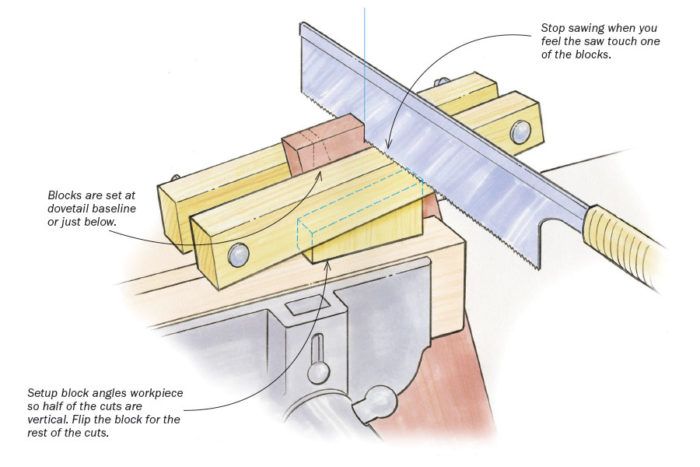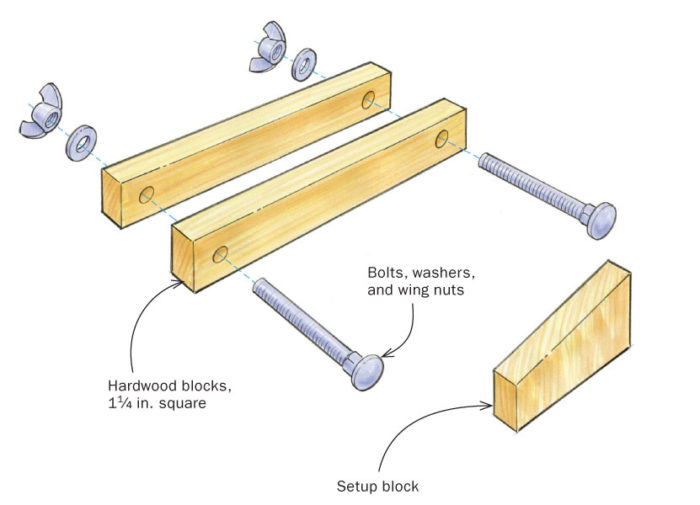
I have been using these two jigs for hand-cut dovetails. Because it’s so easy to saw past the baseline when cutting tails and pins, I made a simple stop from two blocks of hardwood attached with bolts and wing nuts. Clamping it just below the baseline works best. I used it for several years, and then added the small angle block that ensures that the tail cuts are perfectly vertical. I find it much easier to cut to the line that way, rather than trying to cut at an angle. After I make half of the cuts, I loosen the vise, flip the lower block, and re-adjust the board to make the rest of the cuts vertically, too.
—Charlie Holt, Greenwood Village, Colo.
Drawings: Dan Thornton
Issue #264 Nov/Dec 2017



















Comments
I have been a subscriber to Fine Woodworking for several years and am constantly amazed by your readers ingenuity shown in the Workshop tips pages. That shown above is a fine example. For several decades I have used a much simpler method. Having marked out the wood ready to saw I put it in the vice ready to cut but only hold it lightly, I then stand a try square in front and align the cut line with the square's edge and then tighten the vice, the cut line is then perpendicular and is easy to cut acurately.I find if you pay attention you do not cut past the base line. This works fine for me with the added bonus that set up time is only a moment or two.
For tails I just throw the wood on my bandsaw. Perfectly vertical cuts every time. For the tails, I throw the wood on my bandsaw, with the wide side of the pins down, and cut close to the line.
For pins and tails, I cut three or four (or more, depending on the width of the piece) relief cuts which makes chiseling oh so much easier.
Log in or create an account to post a comment.
Sign up Log in